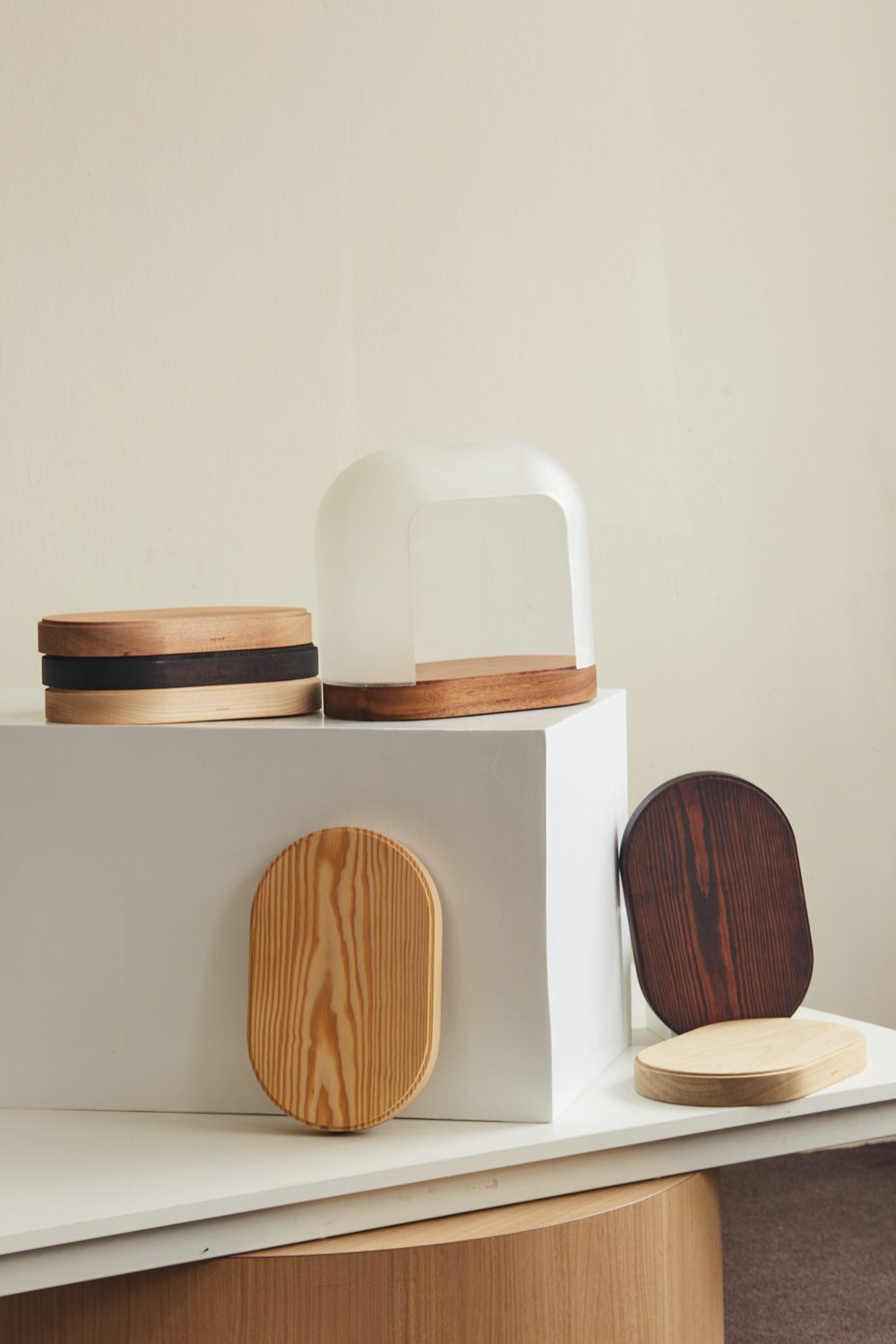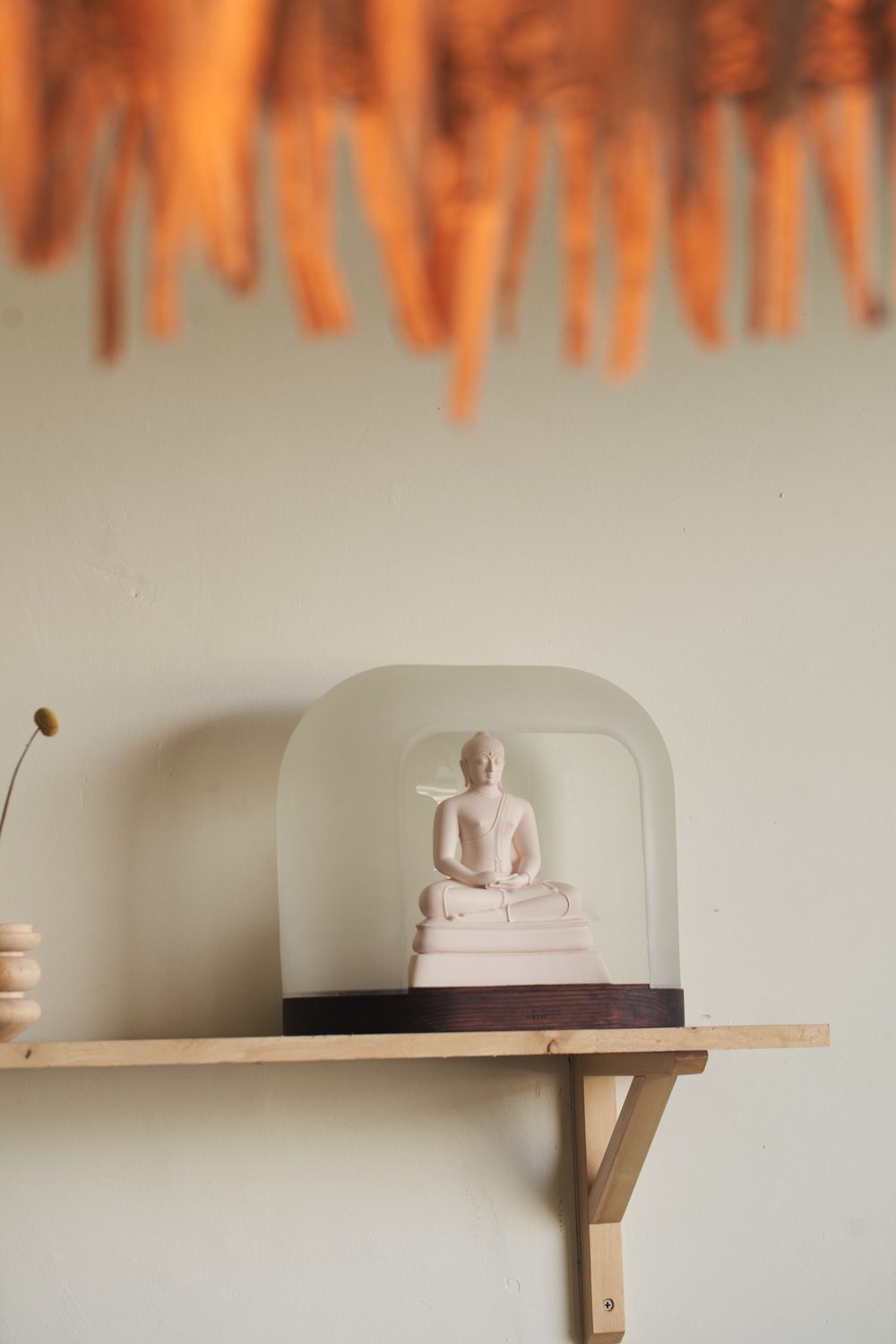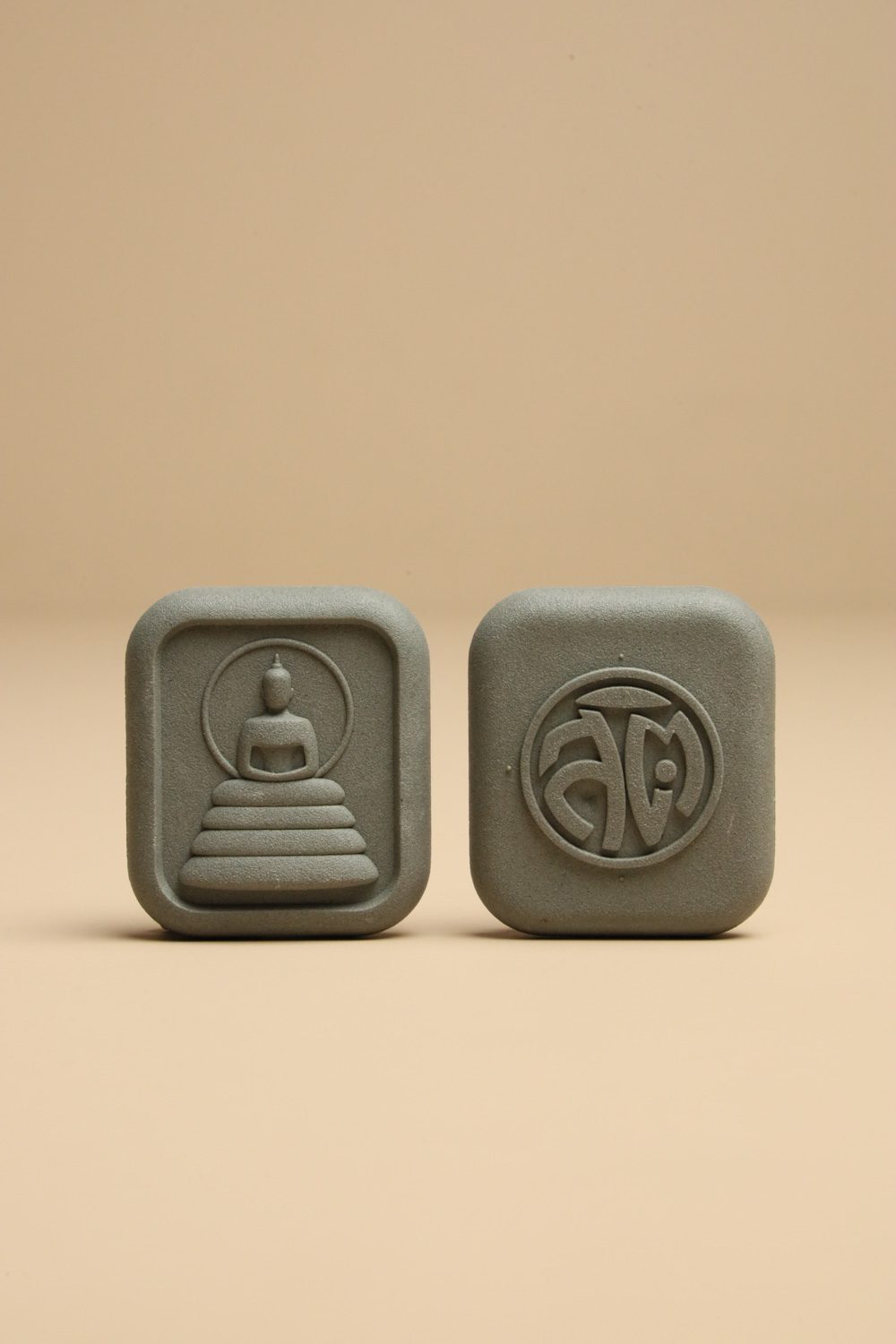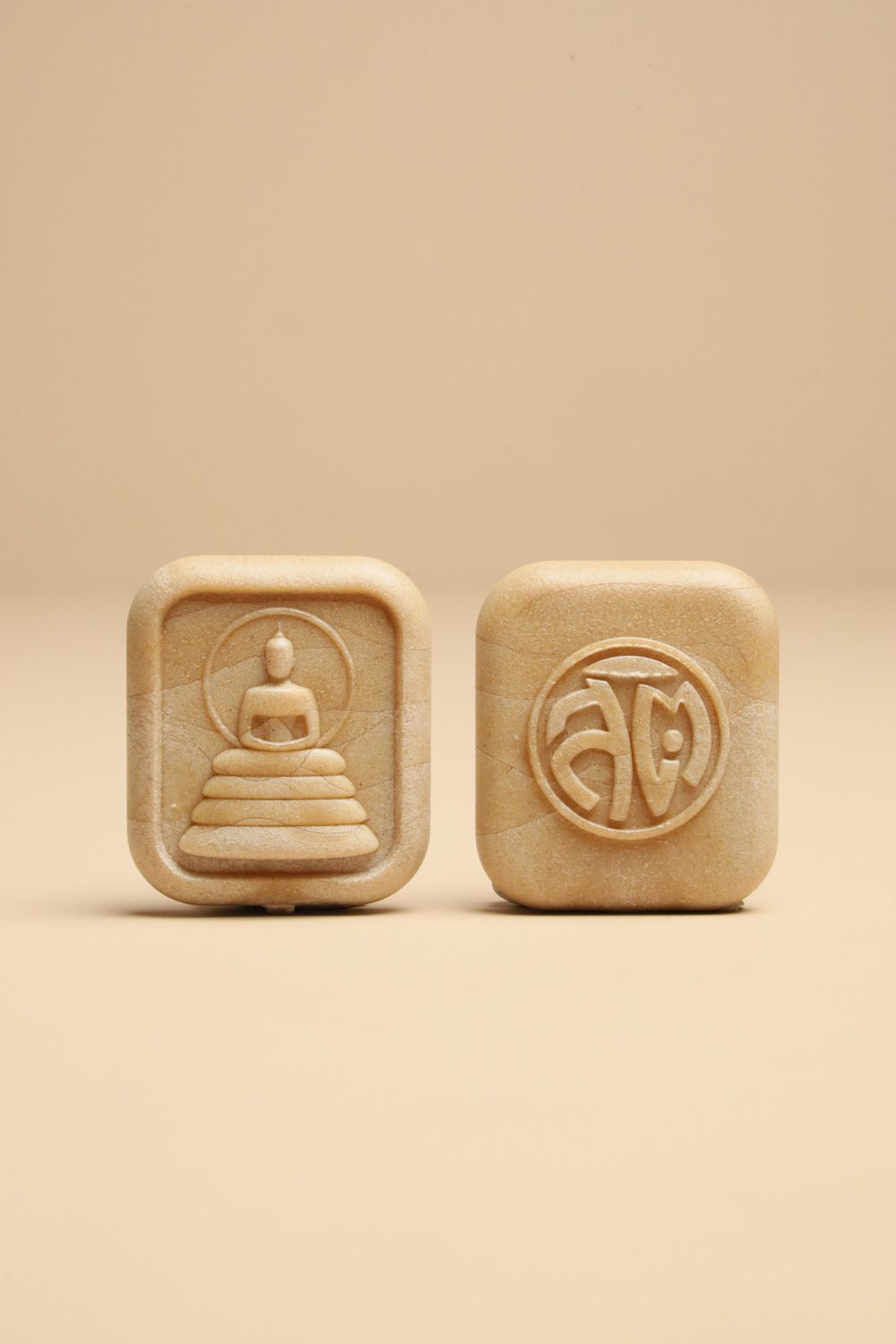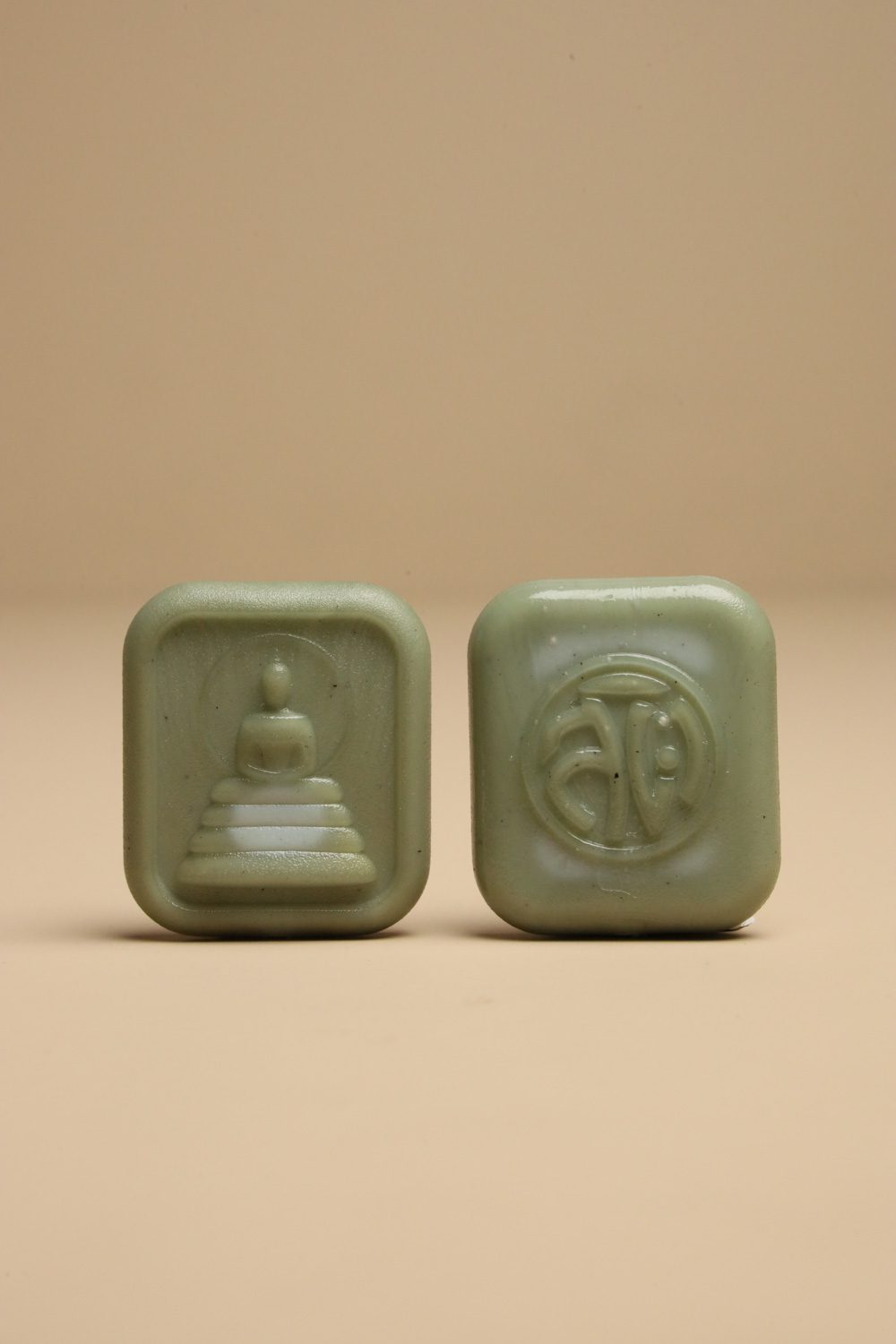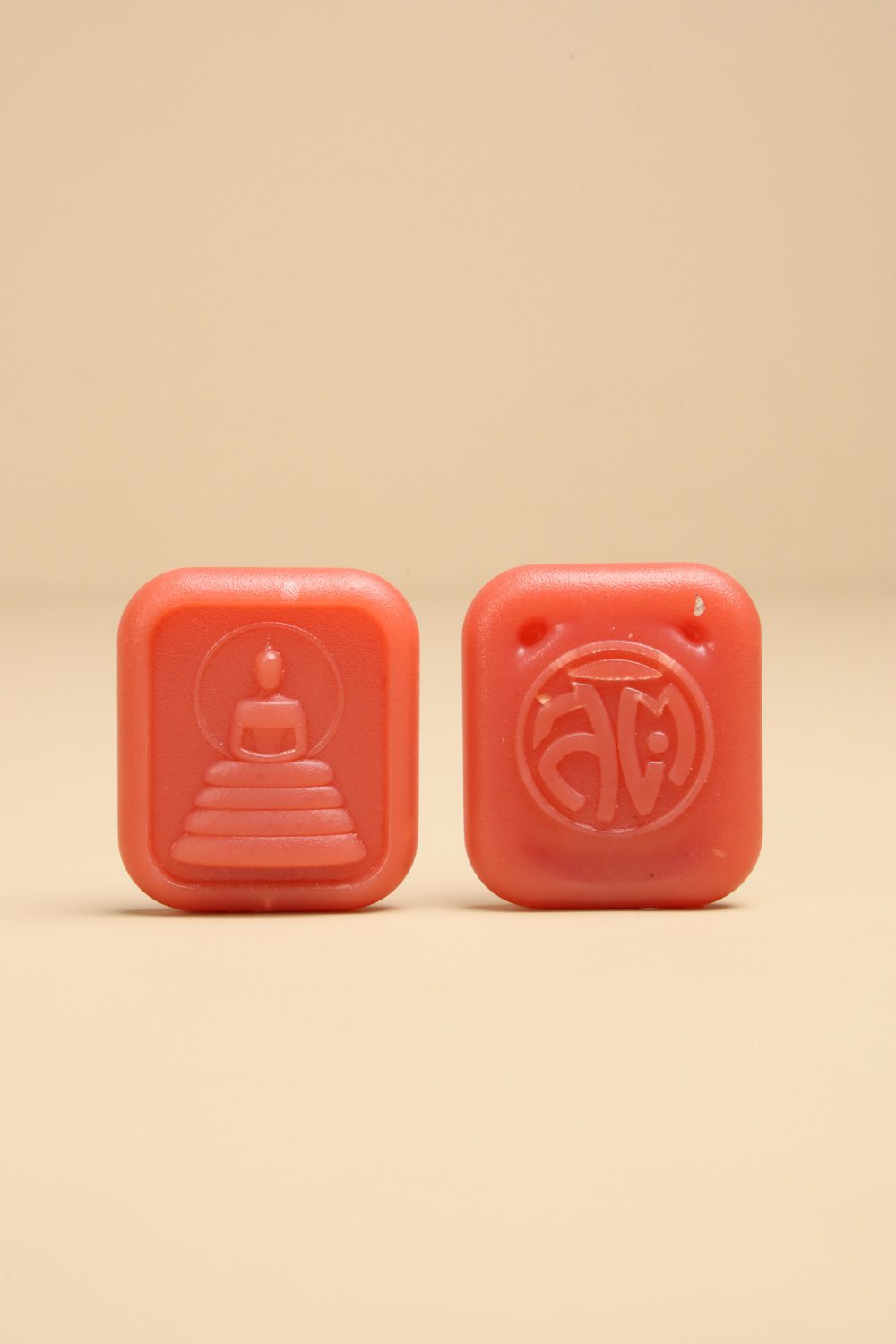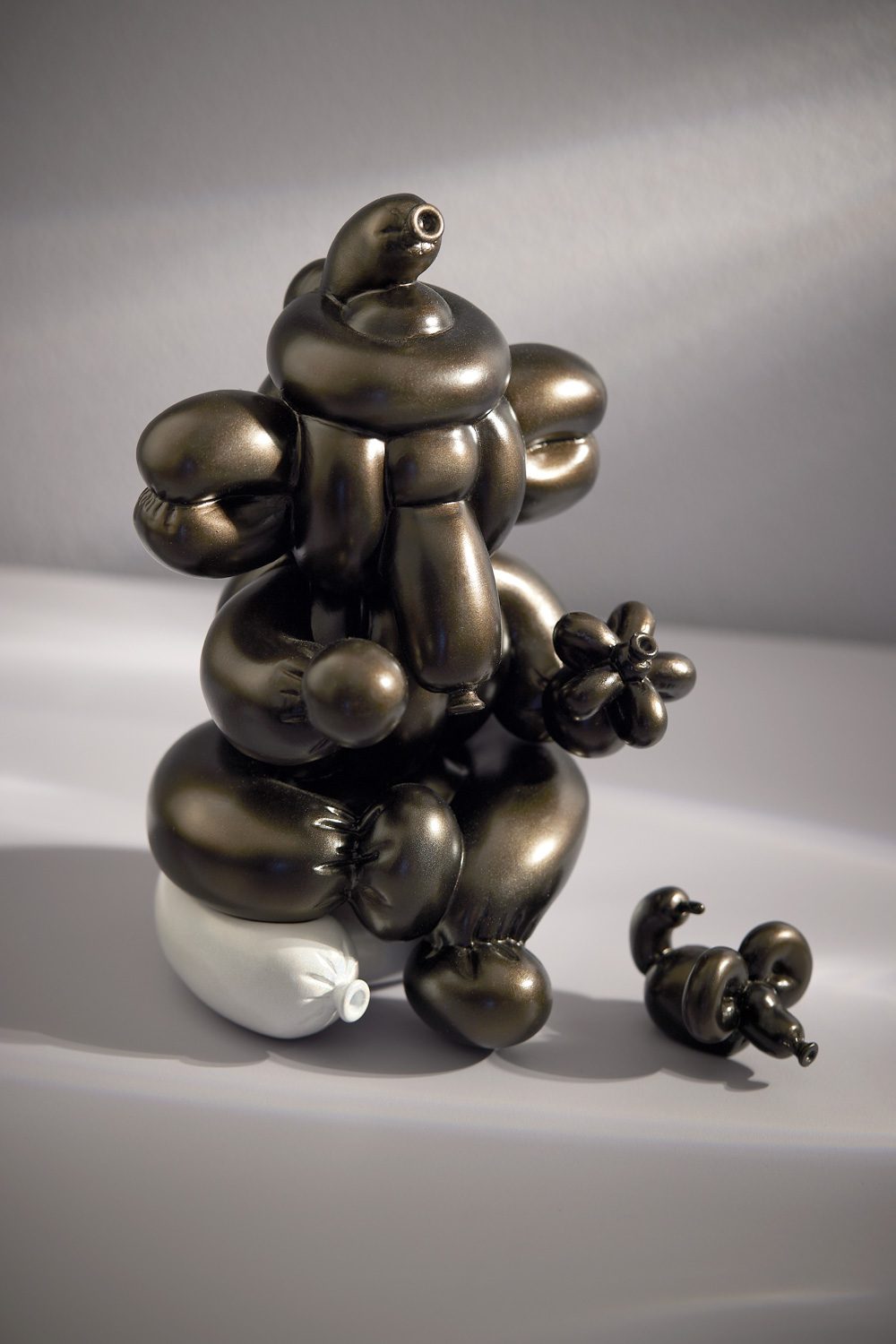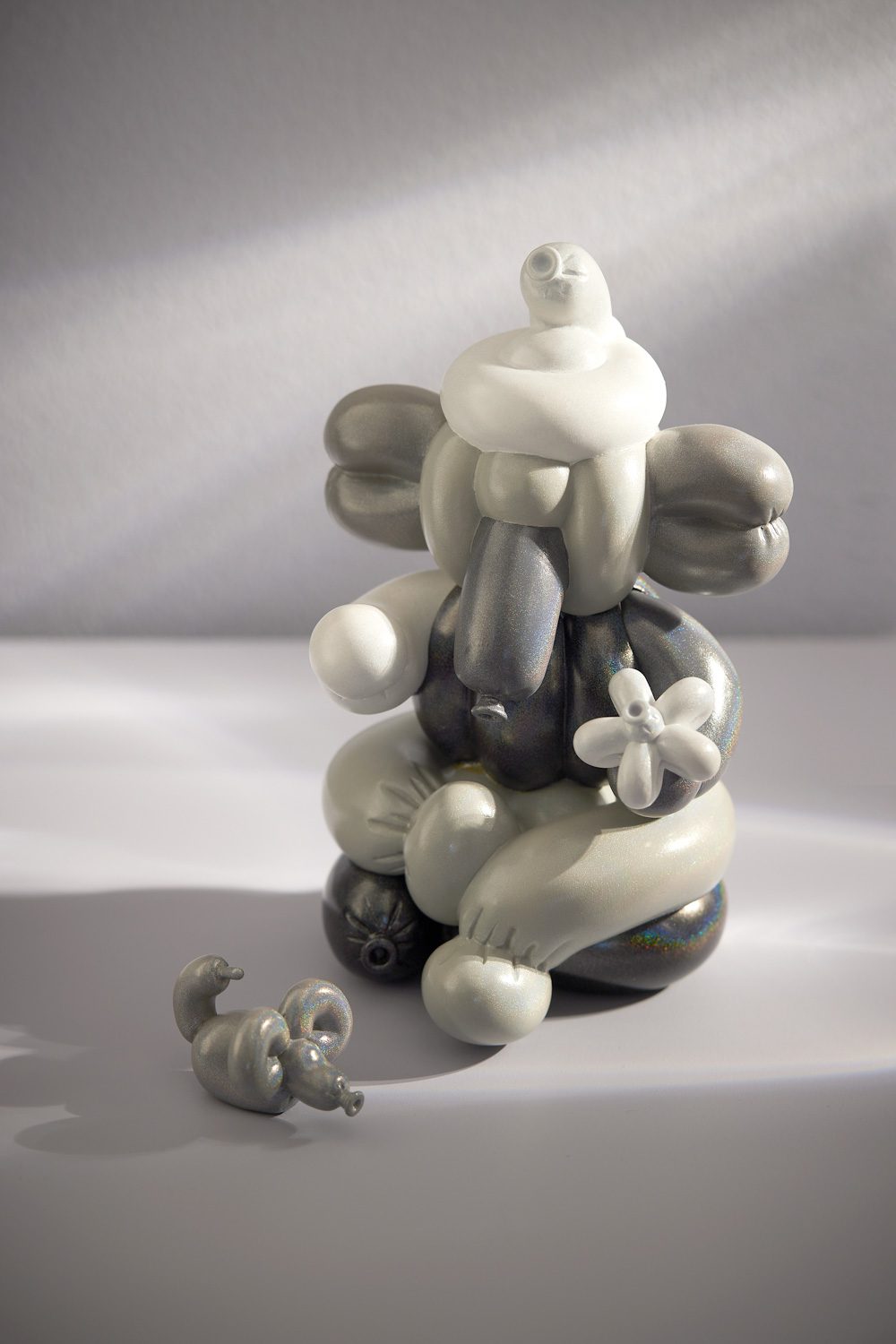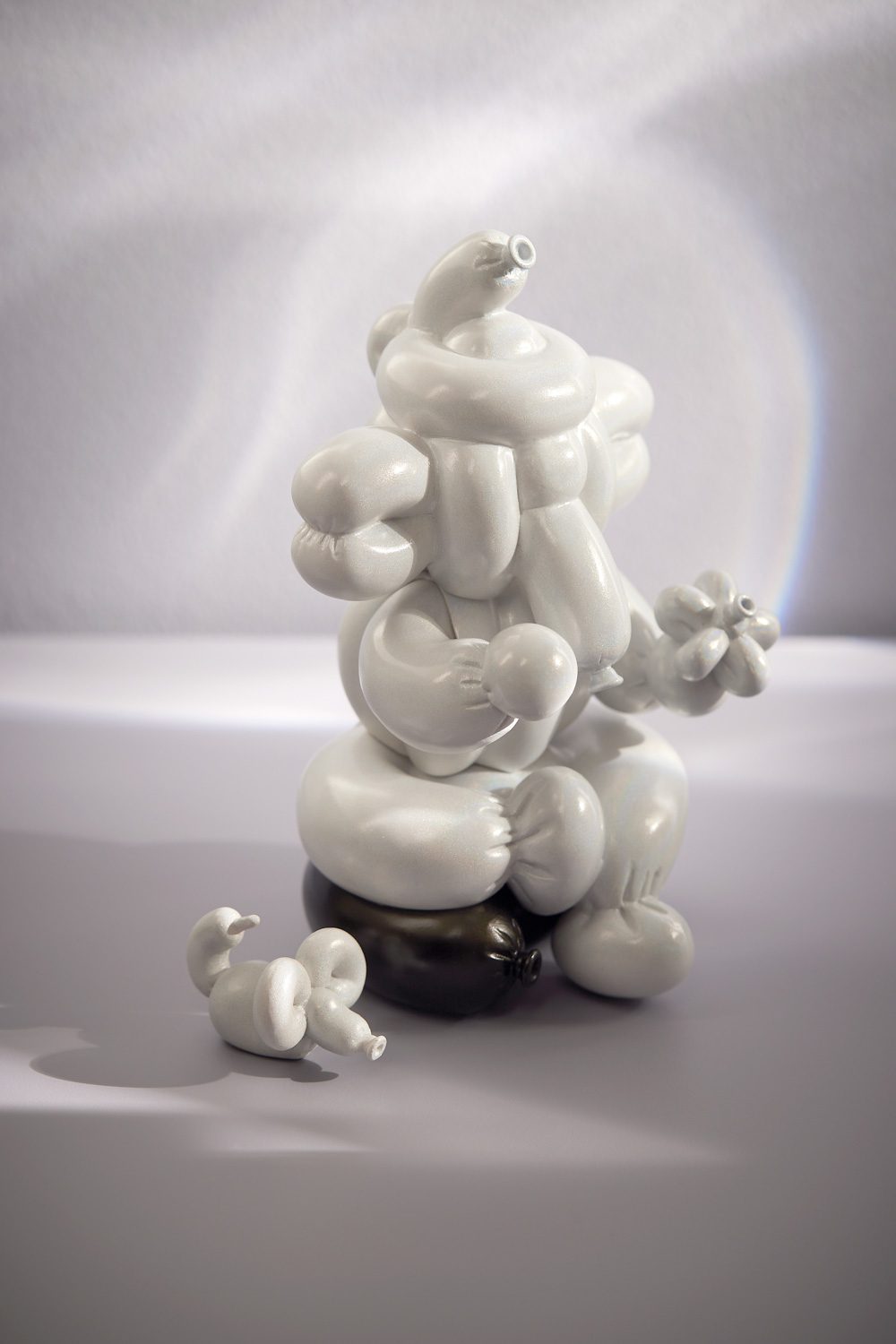EXPLORE FOUR DESIGN PROJECTS THAT ARE INFLUENCED BY BELIEFS AND SUPERSTITIOUS IDEAS, WHILE ALSO FULFILLING FUNCTIONAL REQUIREMENTS AND EXPLORING NEW DESIGN TERRITORIES
TEXT: PRATCHAYAPOL LERTWICHA
PHOTO CREDIT AS NOTED
(For Thai, press here)
Living in Thailand can be full of uncertainties, such as the possibility of an overhead u-turn bridge collapsing out of nowhere and crushing the cars driving on the road below or the erratic and unpredictable economy fuelled by the pandemic. It’s hardly surprising that more Thais are becoming more interested and invested in worshiping sacred objects or doing all sorts of things to “boost” their good fortune. In 2022, LINE Thailand disclosed an intriguing statistic: over 30,000 people used its “picking clothes with auspicious colors” feature per day, and the number of people making merit online increased fourfold compared to the previous year’s data.
Neeranooch Malangpoo, professor at the Department of Anthropology of Silpakorn University’s Faculty of Archaeology, has always been interested in religious and societal beliefs. She explained Thai people’s growing superstitious beliefs, popularly referred to with the slang term “mutelu,” as a phenomenon where people seek a spiritual anchor in life amidst the volatility of the neoliberal economy. After the late 1990s economic crisis in Thailand, people sought comfort and hope through superstitions, worshipping what they believed to be sacred items that would bring good luck and prosperity. When the world places a higher value on one’s achievement as an entrepreneur, and as more people move away from the life of office workers with monthly income to be their own boss, such a path to success is riddled with enormous uncertainty, resulting in the rising popularity of ‘mutelu.’ ¹
Following consumers’ growing interest and demand, a significant number of designers have used these “beliefs” as themes or concepts in their creations. art4d chooses four design projects that we find to be pretty interesting, with undeniable influences from superstitious ideas, in case anyone is inspired by this new realm of possibilities that design can explore.
[1] sanook. (2022). Why are more Thais becoming more superstitious?. Retrieved 15 February 2023, from sanook.com/news/8641818
PAJJEK Collection

PAJJEK | Photo courtesy of Mutay
With PAJJEK, a modern-looking altar by Mutay, you can create the ideal shrine for your sacred items, Buddha images, and sculptures. The altar is made for a single piece of Buddhist art or Buddha sculpture, as hinted at by the name PAJJEK, which is a Thai word that means “individuality.” The piece, which consists of a hardwood base and a translucent glass cover, will transform any holy altar into something that can easily pass for MUJI furniture.
Cloudy
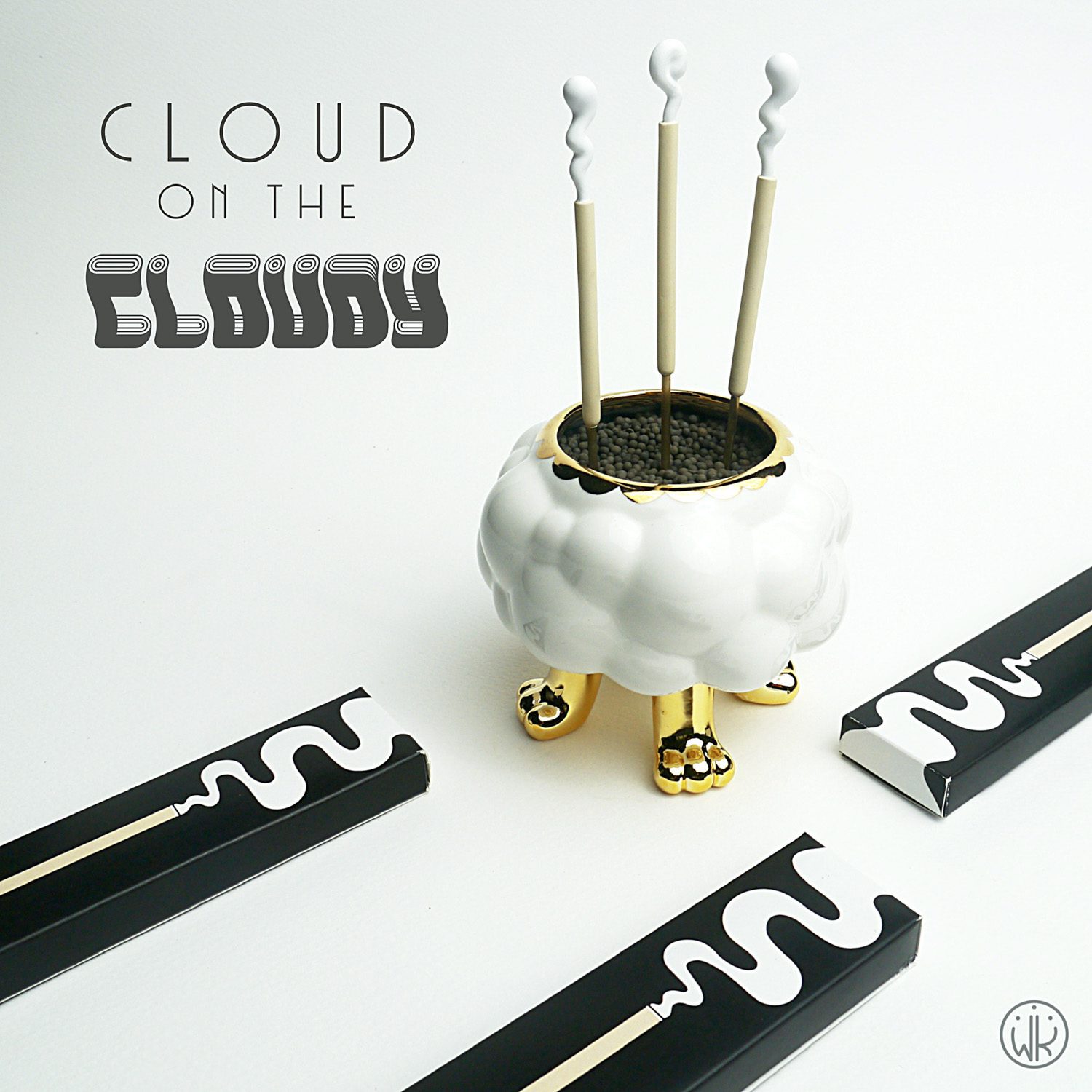
WK.studio is well-known for its beautiful collection of cute ceramic sculptures of sacred gods and goddesses. Besides the sculptures, WK.Studio creates a joss stick pot, an essential item when it comes to worship. Cloudly, the name given to this adorable incense pot, has four legs that resemble those of a cat. WK.Studio intends for the piece to be used as a home décor item as well as a joss stick holder. Cloudy is created to have its own built-in joss sticks and smoke effect, giving a perfect ambience for those who are bothered by smoke. Who says you have to be all that serious when you worship your sacred god?
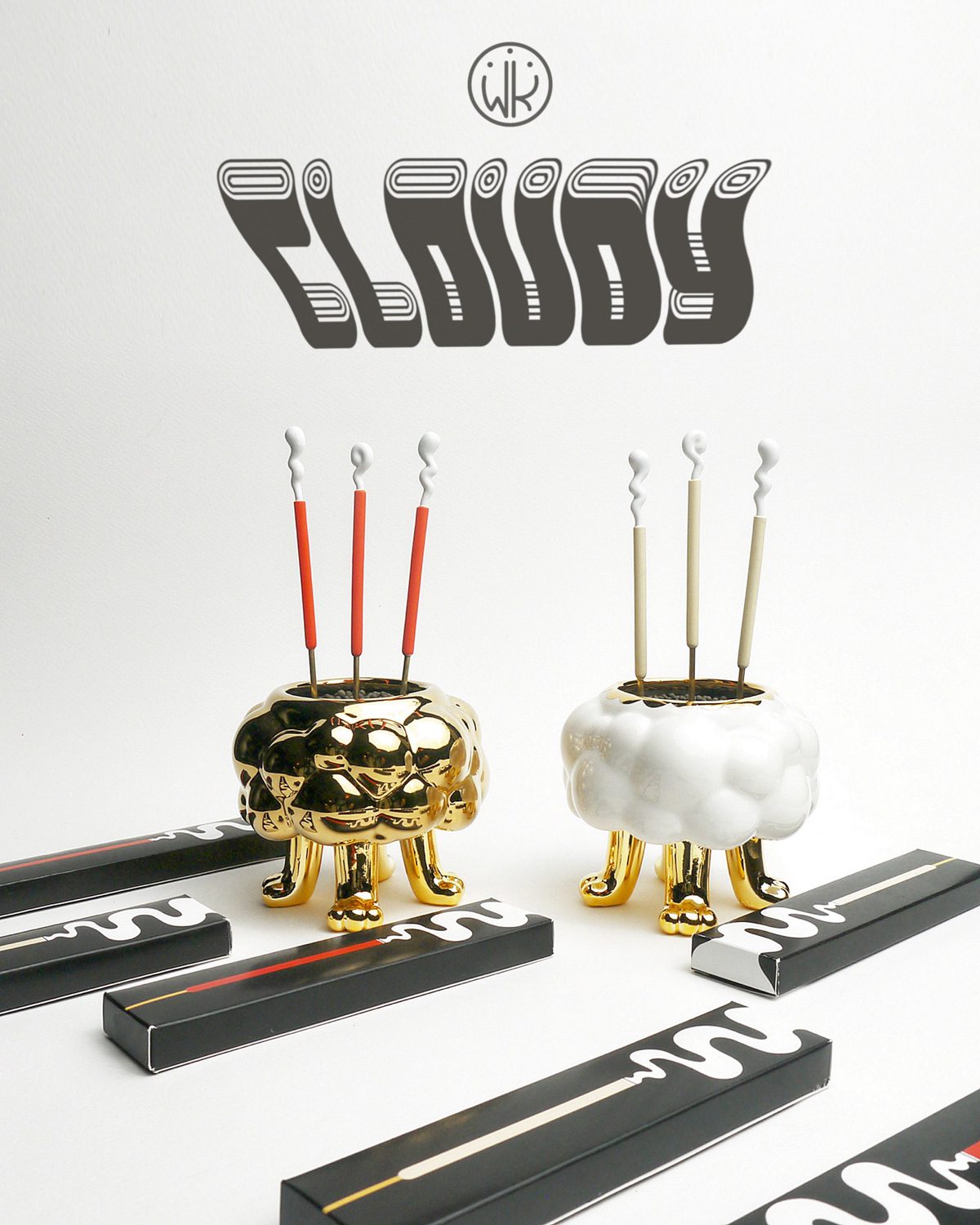
Cloudy | Photo courtesy of Wk.studio
Phra Sati
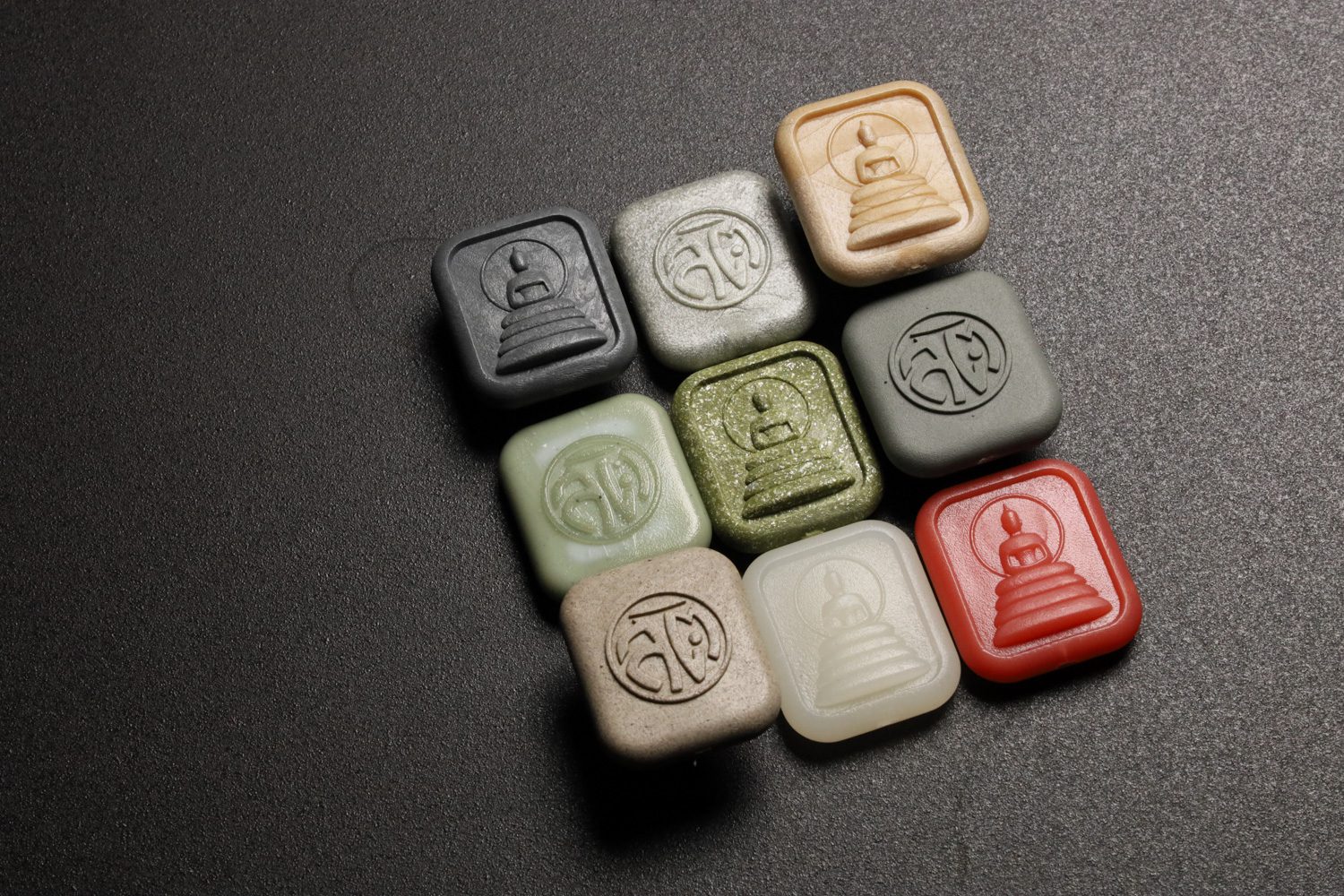
Phra Sati | Photo courtesy of Qualy
Qualy’s Phra Sati has to be one of the most talked-about projects at Bangkok Design Week. Phra Sati is an amulet made of waste materials such as thin foil bags, plastic bags, and water bottle caps. The design transforms leftover objects into a valuable item that people want to keep and cherish.
The work is also linked to the Buddhist concept of the cycle of life and death. The cycle in this case isn’t of a life or a spirit, but of plastic rubbish that has been reincarnated. Phra Sati was designed as a part of the Pa Pah Design Week project, where people who made donations to aid the participating charitable foundations and organizations would be given the amulet as a gift.
Balloon Ganesha
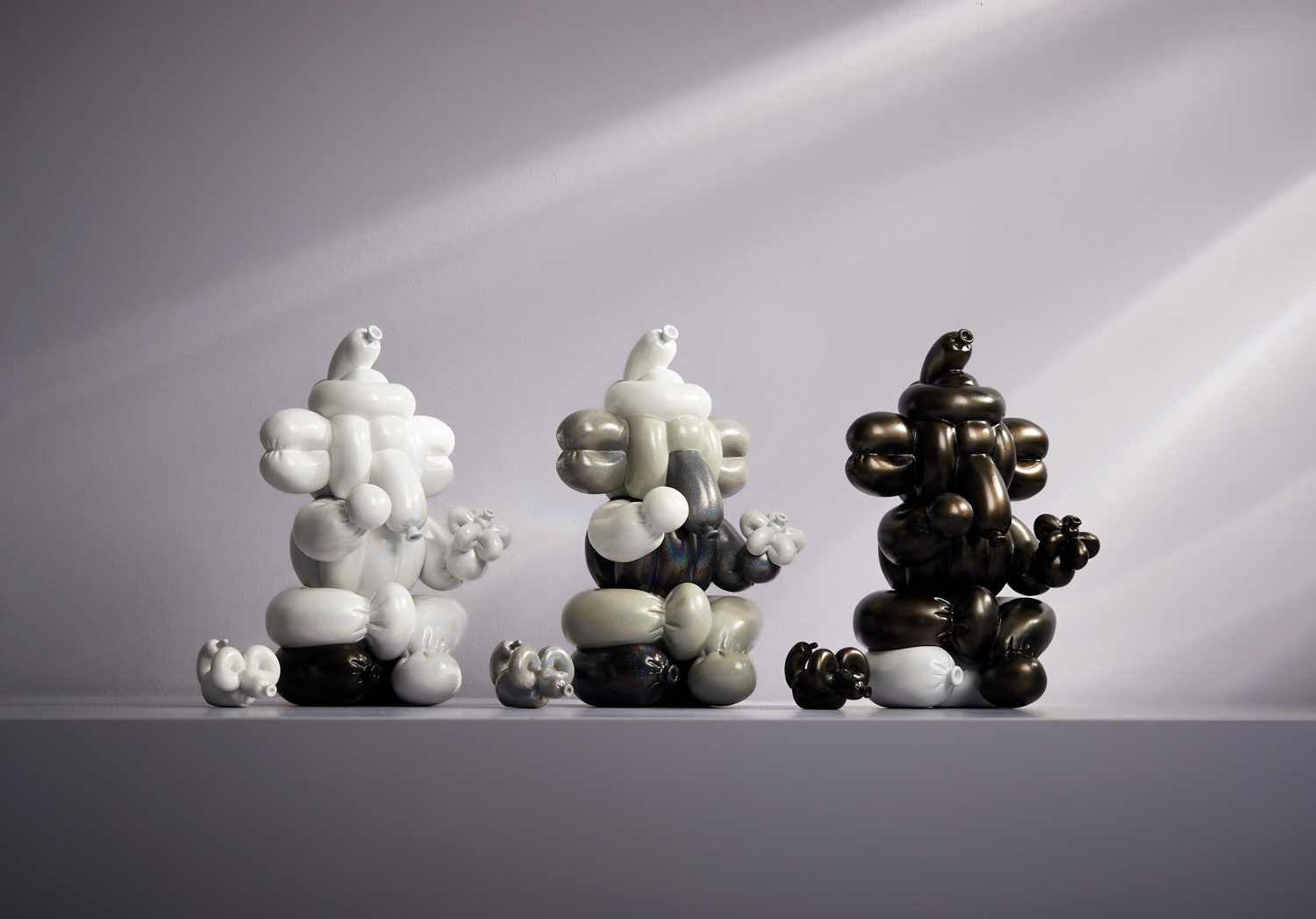
Balloon Ganesha | Photo courtesy of Sukerthing
“A seemingly light form and a mass filled with faith.” This cool tagline is Sukerthing’s description of Balloon Ganesha, a sculpture of the Ganesha god that looks very much like a balloon but is actually made of resin.
Sukerthing’s intention to create a form of toy art led to the inception of Balloon Ganesha. The design team chose Ganesha due to the god’s unique characteristics and marketing potential. The balloon-like appearance is the result of collaborative research and experiments between the designer and a balloon artist to figure out how to make the balloon-like form out of the physical qualities of the Ganesha god. After the prototype was completed, the three-dimensional mold for resin casting was then created using 3D printing.

Balloon Ganesha | Photo courtesy of Sukerthing
The Mushag Mouse, Ganesha’s little follower, is included in the details of the Balloon Ganesha. In addition to resin, the sculpture is available in ceramic and stainless steel, with the option of bronze to be available in the future.
If you like any of these projects, don’t forget to check out the creators’ social media pages and websites and get yourself more items to boost your luck other than colored shirts and auspicious phone wallpapers.
1 sanook. (2022). Why are more Thais becoming more superstitious?. Retrieved 15 February 2023, from sanook.com/news/8641818

 Phra Sati | Photo courtesy of Qualy
Phra Sati | Photo courtesy of Qualy 